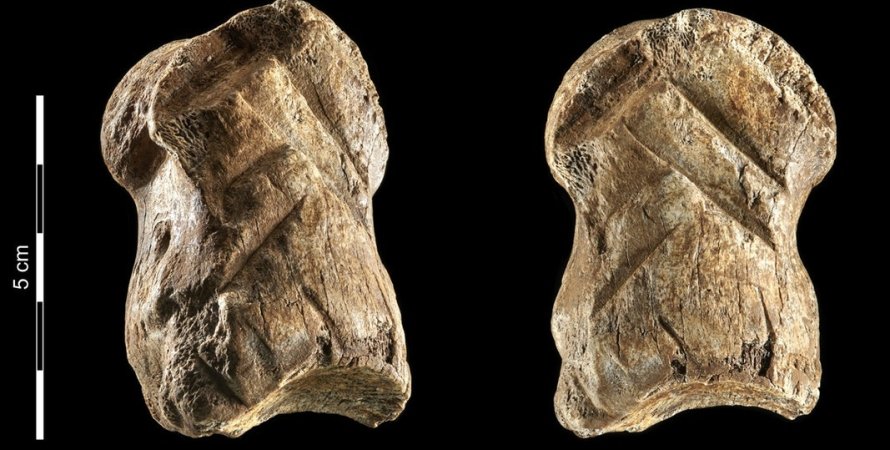The statuette, carved by Neanderthals, is the oldest piece of abstract art known to date.
In the Saxon Eichornhele cave, archaeologists have found so far the oldest example of Neanderthal abstract art – a 51,000-year-old deer bone statuette. It is reported by Nature Ecology & Evolution.
A figurine carved from a phalanx of a large-horned deer, an extremely rare animal for northern Germany during the Middle Paleolithic, was found next to the shoulder blades of a deer and the skull of a cave bear, which, according to scientists, may indicate some kind of ritual.
“This deer bone is covered with a complex geometric pattern consisting of two sets of parallel lines. Our find is evidence that the Neanderthals possessed the rudiments of abstract thinking and were able to create works of art that have symbolic meaning, long before the arrival of Cro-Magnons in Central Europe,” the researchers write. …
Until recently, scientists believed that abstract art, religion and various ideas about the other world appeared relatively recently, after our ancestors switched to a sedentary lifestyle. In recent years, these beliefs have begun to be questioned by several finds in Europe and Asia.
So, scientists found that the tribes inhabiting Southeast Asia mastered abstract art 44 thousand years ago, and their contemporaries from Europe already at that time began to perform rituals similar to religious rituals.
And this was inherent not only to the Cro-Magnons, but also to their predecessors – the Neanderthals.
Scientists who conducted the study under the direction of Thomas Terberger, professor at the University of Göttingen, believe that a carved deer bone found in the famous Unicorn Cave in northern Germany is further evidence that Neanderthals thought abstractly. And also radiocarbon analysis showed exactly when the statuette was produced – 51 thousand years ago. So now the carved deer bone from the Unicorn Cave can officially be considered the most ancient work of art in the world.
The Unicorn’s Cave has attracted treasure hunters for a long time. Locals dug up the remains of prehistoric animals, which were abundant here, and sold them as amulets and potions under the guise of the bones of mythical unicorns. This continued until 1872, when the famous German anthropologist Rudolf Virhof conducted research and discovered a mass of bones of prehistoric animals: mammoths, cave bears and lions, as well as wolves.
Most of the finds made by Virhof are still on display in the museum located near the cave.









